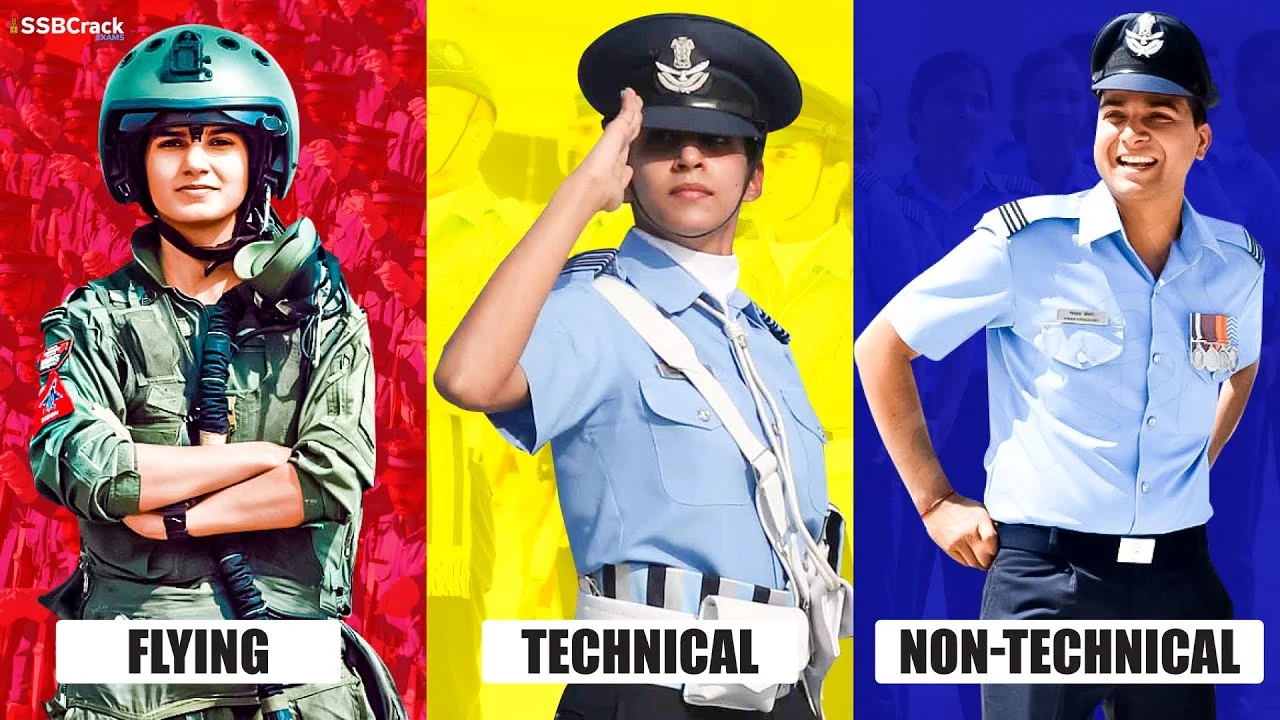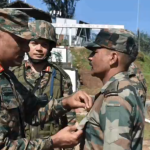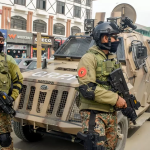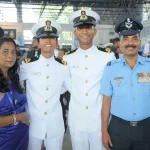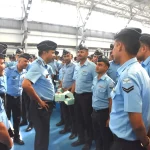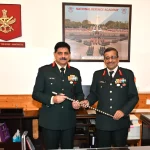The Indian Air Force (IAF) is one of the most formidable air arms in the world, structured into specialized branches that ensure the smooth functioning of combat, support, and technical operations. Each branch has its unique role, selection criteria, and responsibilities that contribute to the efficiency and combat readiness of the IAF. Below is a detailed explanation of all major branches of the Indian Air Force.
Flying Branch
The Flying Branch is the core operational arm of the IAF. Officers in this branch are trained to operate aircraft in combat and non-combat roles.
Sub-Divisions
- Fighter Pilots – Fly supersonic fighter jets like Rafale, Sukhoi-30MKI, Mirage-2000, Tejas, and MiG-29 to ensure aerial dominance and conduct strike missions.
- Transport Pilots – Operate aircraft such as C-17 Globemaster, IL-76, An-32, and C-130J Super Hercules for strategic and tactical airlift, logistics, and humanitarian missions.
- Helicopter Pilots – Fly helicopters like Mi-17 V5, Dhruv ALH, Apache, and Chinook for troop movement, supply missions, casualty evacuation, and special operations.
Key Responsibilities
- Air-to-air combat and air defense
- Strategic bombing and precision strikes
- Logistics support and disaster relief
- Reconnaissance and surveillance
Ground Duty (Technical) Branch
The Technical Branch ensures the operational readiness of IAF aircraft, weapon systems, and equipment. Officers here are highly skilled engineers who specialize in different areas.
Sub-Divisions
- Aeronautical Engineering (Electronics) – Focuses on avionics, radar, communication systems, electronic warfare, and missile systems.
- Aeronautical Engineering (Mechanical) – Deals with aircraft engines, airframes, propulsion, and weapon systems.
Responsibilities
- Aircraft maintenance and servicing
- Research and development of new technology
- Ensuring combat readiness of weapons and equipment
- Supporting aerospace innovation
Ground Duty (Non-Technical) Branch
This branch ensures the administrative, logistical, financial, and human resource management of the IAF. It allows the Air Force to function smoothly beyond technical and combat roles.
Sub-Divisions
- Administration – Responsible for base operations, air traffic control (ATC), and military law enforcement (Provost Branch).
- Logistics – Manages supply chain, transportation, warehousing, and resource distribution.
- Accounts – Handles financial planning, auditing, and budgeting.
- Education – Provides academic training to cadets and officers at various IAF academies and institutions.
- Meteorology – Provides weather forecasting and climate data to support operations.
Medical Branch
The Medical Branch, known as the Armed Forces Medical Services (AFMS), provides healthcare and medical support to IAF personnel and their families.
Responsibilities
- Preventive and curative healthcare
- Aviation medicine and fitness assessments for pilots
- Emergency care during combat and humanitarian missions
- Research in aerospace medicine
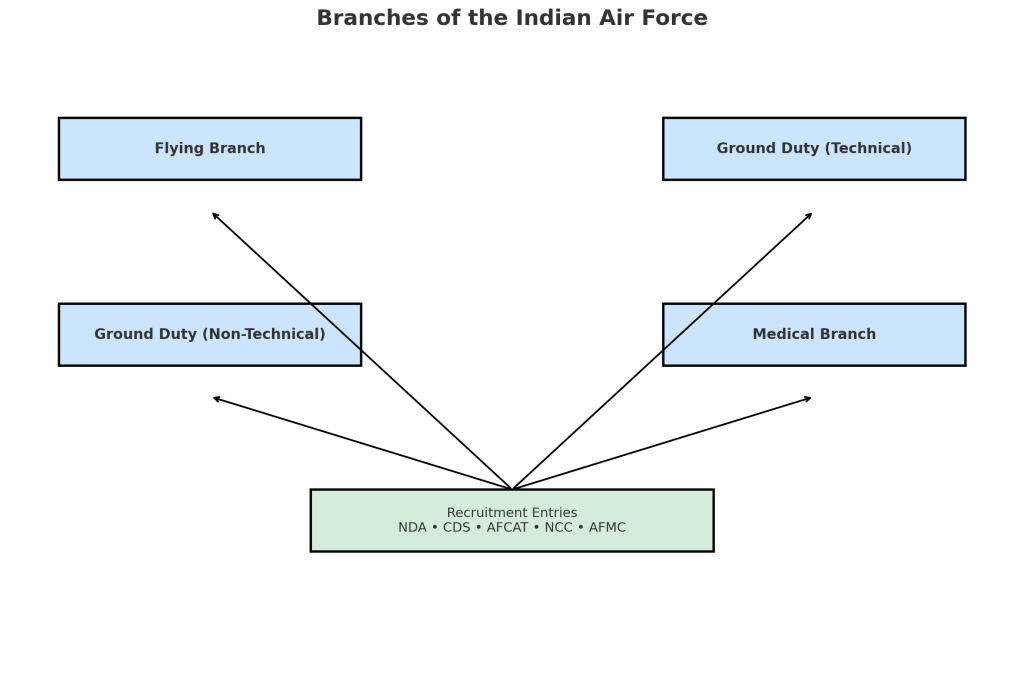
Comparison Table of IAF Branches
| Branch | Sub-Divisions | Primary Role | Examples of Duties |
|---|---|---|---|
| Flying | Fighter, Transport, Helicopter | Combat operations, airlift, disaster relief | Dogfights, airstrikes, troop transport |
| Ground Duty (Technical) | Aeronautical Engg. (Electronics/Mech) | Aircraft and weapons engineering, maintenance | Radar ops, aircraft servicing |
| Ground Duty (Non-Tech) | Administration, Logistics, Accounts, Education, Meteorology | Admin and operational support, logistics, finance, training | ATC, logistics planning, weather reports |
| Medical | AFMS (Doctors, Surgeons, Specialists) | Medical support, aviation medicine, research | Pilot health exams, emergency treatment |
Training Academies for Each Branch
- Flying Branch – Air Force Academy (AFA), Dundigal, Hyderabad
- Technical Branch – Air Force Technical College (AFTC), Bengaluru
- Non-Technical Branch – Air Force Administrative College (AFAC), Coimbatore
- Medical Branch – Armed Forces Medical College (AFMC), Pune
How Recruitment Happens
Flying Branch
- Through NDA, CDS, AFCAT, and NCC Special Entry
- Pilot Aptitude Battery Test (PABT)/Computerized Pilot Selection System (CPSS) is mandatory.
Ground Duty (Technical)
- AFCAT (EKT – Engineering Knowledge Test)
- Recruitment of engineers through SSC and PC entries.
Ground Duty (Non-Technical)
- AFCAT exam for Administration, Logistics, Accounts, Education, and Meteorology.
Medical
- Recruitment through Armed Forces Medical College and SSC/PC entries for doctors.
Conclusion
The Indian Air Force operates as a cohesive unit because of the well-defined roles of each branch. The Flying Branch spearheads combat operations, the Technical Branch ensures that advanced machines remain airworthy, the Non-Technical Branch manages logistics and administration, and the Medical Branch safeguards health and readiness. Together, these branches create a powerful force that protects India’s skies and contributes to national security, humanitarian efforts, and global peacekeeping.

